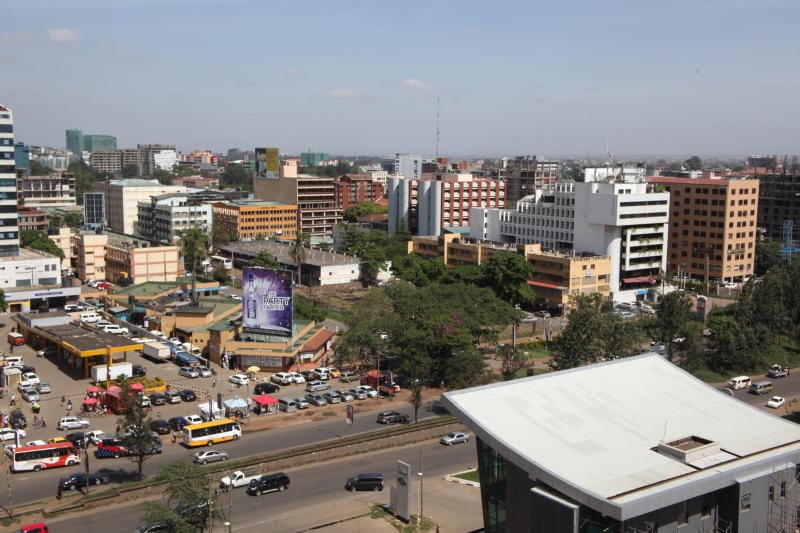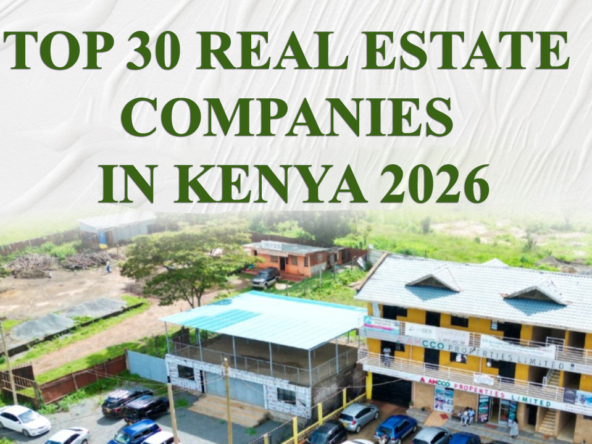The Kenyan real estate market is a dynamic and resilient sector, offering a wide array of investment opportunities despite persistent macroeconomic headwinds. With a high demand for both affordable housing and luxury properties, the market continues to evolve, driven by a growing middle class, diaspora investment, and strategic infrastructure projects. This guide provides a comprehensive overview of the key trends and opportunities shaping Kenya’s real estate landscape in 2024-2025.
Table of Contents
1. A Resilient and Segmented Market
The Kenyan real estate market is characterized by its resilience in the face of economic challenges. For example, despite the country’s 78% Debt-to-GDP ratio in 2024 and one-third of government revenue going to debt service, Nairobi’s housing prices have remained robust. This is largely due to strong underlying demand from a burgeoning population, rapid urbanization, a growing middle class, and consistent diaspora investment.
The market is also highly segmented. There is a high demand for affordable housing, but at the same time, the luxury real estate sector is experiencing a surge fueled by high-net-worth individuals and Kenyans living abroad. Digital innovations (PropTech) are also making the market more efficient, and developers are increasingly focusing on sustainability.
2. Residential Sales: Nairobi’s Diverse Landscape
Nairobi’s residential market is known for its diversity, with an average price increase of 8% over the past year. It offers everything from ultra-luxury homes to affordable units in satellite towns.
2.1 Prime Residential Areas
High-end areas like Karen, Runda, Lavington, and Westlands are highly sought after due to their proximity to business centers, schools, and shopping facilities.
- Karen: Properties are typically large houses and villas, with prices ranging from KSh 55 million to KSh 193.8 million. They often include expansive gardens and private pools.
- Runda: Known for its spacious and serene environment, Runda has an average house price of KES 114 million. Listings can go from KES 25 million to KES 350 million.
- Parklands: This suburb offers a mix of apartments and townhouses, with apartments ranging from KSH 14 million to KSH 39 million and townhouses reaching KSH 110 million.
- Westlands: A commercial and residential hub, Westlands is popular for high-rise luxury apartments. Prices for 1-2 bedroom units range from KSh 5.5 million to KSh 17 million, with some luxury apartments costing up to KSh 78 million.
- Kilimani & Kileleshwa: These emerging prime areas have seen property prices increase due to high demand and a shift from low-density housing to residential towers.
A recent trend indicates that detached houses, such as villas and townhouses, are now outpacing apartments in price growth, especially in exclusive suburbs like Muthaiga, Karen, and Runda. In contrast, apartment prices in areas like Upperhill and Westlands have declined, suggesting a potential saturation in some apartment markets.
2.2 Satellite Towns and Affordable Housing
Satellite towns surrounding Nairobi, such as Kitengela, Syokimau, Ruiru, and Ngong, have become key growth corridors. This is driven by improved road infrastructure and lower land prices compared to Nairobi’s inner suburbs.
- Kitengela & Syokimau: These towns are growing quickly and are known for mid-range properties, often priced under KES 10 million.
- Ruiru: Offers a variety of properties, including a 5-bedroom villa listed for KSh 55 million.
- Ngong: Identified as another satellite town where homes can be found for under KES 10 million.
- Athi River: A key growth corridor with 3-bedroom houses listed for KSh 10.5 million near the Mombasa Expressway.
- Juja & Thika: These areas also offer affordable housing and land options, with 3-bedroom houses in Juja available for KSh 8.5 million and in Thika Greens starting from KSh 10 million.
Despite their long-term potential, growth in these satellite towns has recently slowed due to economic pressures on the middle class, which is the primary target market for affordable housing in these areas.
3. The Thriving Luxury Segment
The luxury real estate market in Kenya is experiencing a surge, fueled by an increasing number of high-net-worth individuals and diaspora investors. These luxury properties, priced above KSh 50 million, are defined by premium amenities such as heated pools, home theaters, wine cellars, and smart home systems.
- Top Performance: Nairobi’s luxury market recorded a 4.1% price increase in the 12 months leading to September 2023, placing it 9th out of 45 cities in Knight Frank’s Prime Global Cities Index, ahead of cities like London and Paris.
- Key Locations: High-demand areas include Nairobi’s Upper Hill, Kilimani, Lavington, Westlands, and Parklands. The coastal towns of Nyali and Diani are also popular for vacation homes.
- Emerging Markets: Nanyuki and Naivasha are emerging as new luxury markets for exclusive country homes and eco-friendly estates.
4. Coastal and Other Major Urban Centers
Beyond Nairobi, other urban centers offer diverse real estate opportunities. Kenya’s coastal region, driven by tourism and holiday homes, is a distinct market.
- Mombasa & Nyali: The average price for houses in Mombasa is KES 52.4 million. In Nyali, a prominent residential area, the average house price is KSh 52.5 million, with a range from KSh 18.5 million to KSh 68 million.
- Diani Beach & Malindi: Diani is a popular destination for vacation homes, with average property prices at KSh 29 million, though luxury mansions can reach KSh 240 million. Malindi is also a key market for holiday homes and luxury rentals.
- Other Centers: Cities like Nakuru, Kisumu, and Nanyuki are growing hubs. Nanyuki, in particular, has become a profitable location for real estate investment, with properties that are relatively affordable compared to prime Nairobi areas.
5. Key Drivers and Macroeconomic Factors
Several factors influence Kenya’s real estate market:
- Macroeconomic Challenges: The country faces a high Debt-to-GDP ratio (78% in 2024), and a significant portion of government revenue is used for debt service. High inflation also increases the cost of construction materials, affecting property prices.
- Demand Drivers: Despite these challenges, demand remains strong due to a booming population, urbanization, a growing middle class, and a persistent housing deficit.
- Diaspora Investment: Kenyans living abroad are a powerful force, contributing over $4 billion annually to the real estate market, with a preference for high-end properties.
- Infrastructure: Major infrastructure projects, such as the Nairobi Expressway and other highway upgrades, have improved connectivity and boosted property values in previously inaccessible areas.
6. The Affordable Housing Programme (AHP)
The government’s Affordable Housing Programme (AHP) is a flagship initiative to address Kenya’s massive housing deficit. The program aims to increase homeownership by offering units with monthly payments as low as KSh 5,000.
- Target Demographics: AHP units are categorized based on income. Social Housing is for those earning below KSh 20,000 monthly, with units costing KSh 0.6 million to KSh 1 million. Affordable Housing is for those earning KSh 20,000 to KSh 100,000, with units priced between KSh 0.8 million and KSh 3 million.
- Challenges: The program faces criticism over the mandatory housing levy, affordability of the units for informal sector workers, and a lack of adequate supporting infrastructure in new developments. The High Court even ruled parts of the Affordable Housing Act unconstitutional in 2023.
- Opportunities: Despite the challenges, the AHP presents opportunities for developers through incentives like free government land and for buyers via subsidized loans.
7. Residential Rental Market: Dynamics and Pricing
Nairobi’s rental market is a significant segment, with high demand from a diverse population. Rental yields in prime areas like Westlands and Kilimani can range from 6% to 10%.
- Rental Prices: Prices vary significantly by location and amenities. In Westlands, unfurnished 1-bedroom apartments start at KSh 75,000, while furnished units can reach KSh 190,000. In Kilimani and Kileleshwa, 1-bedroom unfurnished apartments are typically KSh 55,000 to KSh 65,000.
- Emerging Trends: There is a growing demand for fully furnished apartments and short-term rentals, driven by digital nomads and remote workers. Landlords are also adding amenities like Wi-Fi and robust security to stay competitive.
8. Land for Sale: Investment Potential Across Kenya
Land remains a fundamental asset in Kenya’s real estate market, with prices varying based on location and use.
- Urban Land: Prime Nairobi areas like Kilimani and Westlands command the highest prices, with an acre ranging from KSh 50 million to KSh 200 million. An acre of land in Mombasa along the coast averages KSh 31.6 million.
- Suburban Land: Areas like Ngong and Thika offer more accessible prices, typically from KSh 2 million to KSh 10 million per acre, making them ideal for residential development outside the city.
- Rural Land: Land in rural areas like Kitui and Machakos is the most affordable, with prices from KSh 100,000 to KSh 500,000 per acre, suitable for agriculture or long-term investment.
9. Key Players in the Real Estate Sector
The Kenyan real estate market is shaped by several prominent companies, each offering a range of services.

- HassConsult Real Estate: Known for its quarterly Hass Property Index, which provides crucial data on house price inflation.
- Gazebo Homes Limited : Kenya’s best real estate developer in modern and luxury apartments in Nairobi neighbourhoods like Parklands, South C and Eastleigh.

- Knight Frank Kenya: A regional player offering comprehensive services from property management and valuation to research-led consultancy.
- AMG Realtors: Specializes in providing land investment opportunities, particularly for the Kenyan diaspora, with a focus on transparency and a title deed delivery guarantee.
- VAAL Real Estate: Delivers luxury homes and financial solutions, with projects in prime Nairobi locations.
- Centum Real Estate: A developer of mixed-use urban nodes and affordable luxury homes, with significant projects in Nairobi and Vipingo.
- Username Investment Limited: Focuses on affordable land and plots with ready title deeds, targeting high-growth areas near infrastructural developments.
10. Conclusion and Future Outlook
The Kenyan real estate market remains a dynamic and rewarding sector for strategic investors. While macroeconomic challenges persist, the market’s fundamental drivers strong demographics, urbanization, and infrastructure development provide a robust foundation for continued activity.
The market is becoming increasingly segmented, with a notable “flight-to-quality” in the luxury segment and a slowdown in affordable housing in satellite towns due to economic pressures on the middle class. The government’s Affordable Housing Programme, while a critical initiative, still needs to address key challenges to achieve its ambitious goals.
For investors, opportunities abound across various segments, from the strong performance of luxury homes to the attractive yields of the rental market and the long-term potential of land investment. The future of Kenyan real estate will be shaped by technology and a growing focus on sustainability, making it an exciting space for those who can navigate its complexities.
FAQ Section
What is the current state of the Kenyan real estate market?
The Kenyan real estate market in 2024-2025 is a dynamic landscape marked by resilience. It shows robust demand for both affordable housing and luxury properties, despite macroeconomic challenges like high debt-to-GDP ratios and inflation.
Where are the most popular areas for real estate investment in Kenya?
Popular areas for real estate investment depend on the segment. For prime residential properties and luxury homes, suburbs like Karen, Runda, Lavington, and Westlands in Nairobi are highly sought after. Satellite towns like Kitengela and Ruiru are popular for affordable housing and mid-range properties. The coastal region, especially Diani and Nyali, is ideal for tourism-related investments.
What are the key drivers of demand in the Kenyan real estate market?
The main drivers of demand are booming demographics and rapid urbanization, which have created a persistent housing deficit. Additionally, significant infrastructure development, a growing middle class, and strong investment from the Kenyan diaspora contribute significantly to market activity.
How do macroeconomic factors like inflation and debt affect the market?
Macroeconomic factors can temper positive growth indicators. High inflation increases the cost of construction materials like cement and steel, which leads to higher property prices. A high Debt-to-GDP ratio and the potential for currency devaluation could also increase borrowing costs for both developers and buyers, impacting affordability and investor confidence.




